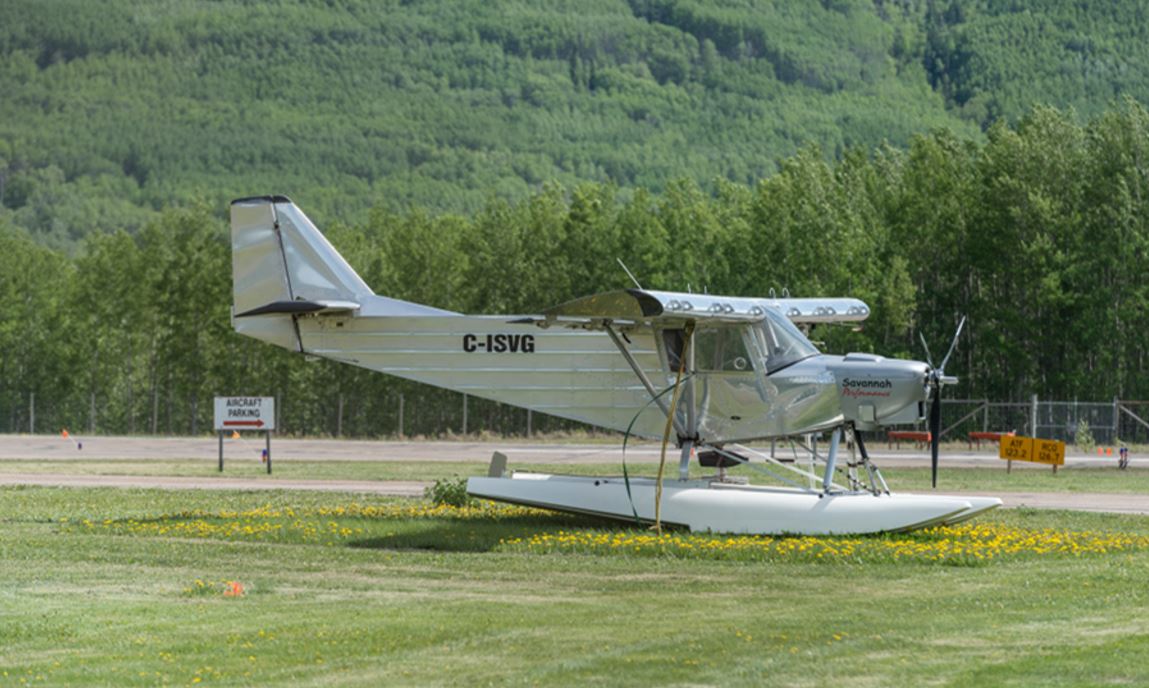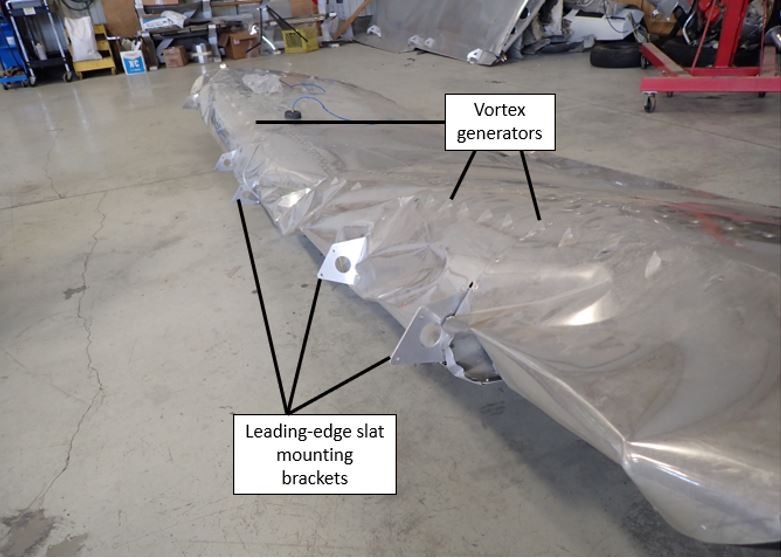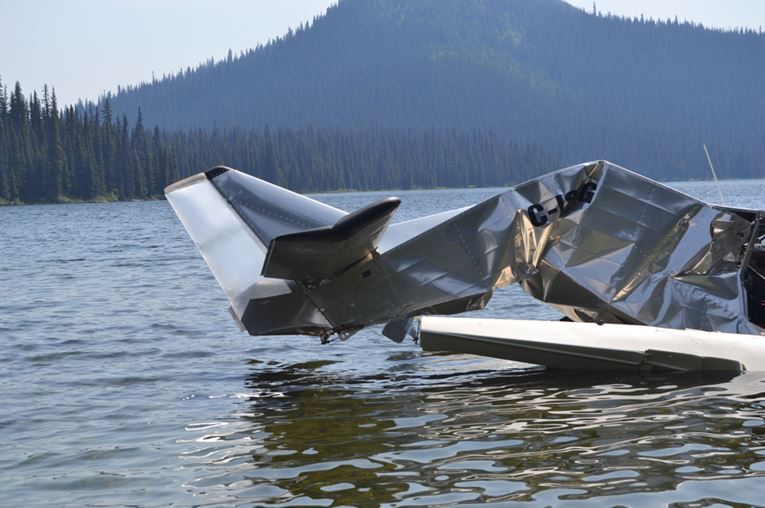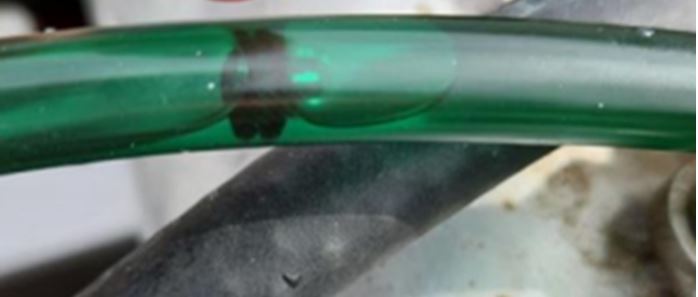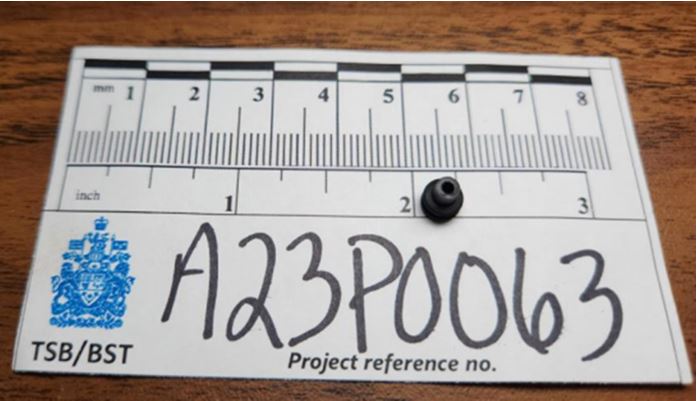Collision with water
Privately registered
Savannah (advanced ultralight), C-ISVG
Simpson Lake, British Columbia
The Transportation Safety Board of Canada (TSB) investigated this occurrence for the purpose of advancing transportation safety. It is not the function of the Board to assign fault or determine civil or criminal liability. This report is not created for use in the context of legal, disciplinary or other proceedings. See Ownership and use of content. Masculine pronouns and position titles may be used to signify all genders to comply with the Canadian Transportation Accident Investigation and Safety Board Act (S.C. 1989, c. 3).
History of the flight
At approximately 0730All times are Pacific Daylight Time (Coordinated Universal Time minus 7 hours). on 25 June 2023, the privately registered Savannah advanced ultralight aircraft (registration C-ISVG, serial number 05-10-51-433), which was equipped with amphibious floats, departed Chetwynd Airport (CYCQ), British Columbia (BC), for a visual flight rules (VFR) flight to Dawson Creek (CYDQ), BC. The aircraft returned to CYCQ at 1130.
Then, at approximately 1213, the aircraft departed CYCQ on a VFR flight to a few local lakes. The pilot, who was the only occupant, had designated 2 responsible personsA responsible person is “an individual who has agreed with the person who has filed a flight itinerary to ensure that the following are notified […] if the aircraft is overdue, namely, (a) an air traffic control unit, a flight service station or a community aerodrome radio station, or (b) a Rescue Co-ordination Centre.”(Source: Transport Canada, SOR/96-433, Canadian Aviation Regulations, section 602.70.) to whom he would communicate his positions and intentions regularly during the day.
The aircraft arrived at the first lake, Iver LakeAlso referred to as Snow Lake. (55°19'45"N 122°10'46"W), BC, at 1247, and departed at 1430 to then land at Azouzetta Lake (55°23'12"N 122°36'46"W), BC, at 1452. It then departed Azouzetta Lake at 1456, and the pilot used a satellite-based communication device to send a message to the responsible persons, informing them that he intended to land at Simpson Lake (55°32'6"N 122°40'25"W), BC, next. Following this message, the responsible persons did not receive any further messages from the pilot. They sent 4 messages between 1514 and 1615 with no response from the pilot.
One of the responsible persons, who is a pilot, flew to the area, approximately 37 nautical miles (NM) west-southwest of CYCQ, and, at approximately 1700, saw the occurrence aircraft in the water, near the northwestern shore of Simpson Lake.Simpson Lake is a mountain lake approximately 4100 feet long and 1000 feet wide. Nearby mountains rise to an elevation of approximately 1000 feet above the elevation of the lake. After identifying the aircraft, he flew back to CYCQ. While en route, he made radio contact with a helicopter operating near the accident site, but that crew was unable to assist.
The second responsible person arranged for a helicopter, which flew to the accident site with the first responsible person. That helicopter landed near the accident site, and the occurrence pilot was found fatally injured.
The second responsible person contacted the Joint Rescue Coordination Centre (JRCC) in Victoria, BC, at 1718 to report the aircraft accident. The Royal Canadian Mounted Police (RCMP) was notified at 1739 and attended the scene shortly thereafter. The aircraft had substantial damage.
Pilot information
The pilot held a glider pilot licence, a private pilot licence – aeroplane endorsed with night and seaplane ratings, and a valid Category 3 medical certificate. He had accumulated about 400 total flight hours, of which approximately 40 hours were in the occurrence aircraft. He was also an aircraft maintenance engineer.
This was the pilot’s first time flying to Simpson Lake.
Weather information
There is no weather reporting station at Simpson Lake. The nearest weather stations are at Mackenzie Aerodrome (CYZY), BC, and CYCQ. CYZY is 21 NM southwest of the accident site, but it did not report weather after 0700 that day. CYCQ is 37 NM east-northeast of the of accident site and issued an aerodrome routine meteorological report at 1500 that indicated the following:
- Winds from 150° true (T) at 9 knots; wind direction variable from 120°T to 260°T
- Visibility of 35 statute miles (SM)
- Few towering cumulus clouds at 4500 feet above ground level (AGL), few clouds at 5000 feet AGL, scattered clouds at 11 000 and 15 000 feet AGL
- Temperature 27 °C, dew point 14 °C
- Altimeter 29.93 inches of mercury
Remarks:
- Towering cumulus 2/8, cumulus 1/8, alto cumulus 1/8, and alto stratus 1/8
- VirgaVirga is water or ice particles falling from a cloud, usually in wisps or streaks, and evaporating completely before reaching the ground. (Source: NAV CANADA, The Weather of Ontario and Quebec—Graphic Area Forecast 33, Glossary of Weather Terms, p. 210.) to the north, southeast, and southwest
- Heavy smoke in the valleys to the south and west
- Sea level pressure 140 hectopascals and density altitude 3800 feet.
Based on calculations, the density altitude for Simpson Lake was between 5000 and 6000 feet above sea level.
The TSB requested a meteorological assessment from Environment and Climate Change Canada.Environment and Climate Change Canada, Meteorological Assessment – June 25, 2023 - Lake Simpson, British Columbia (25 September 2023). The assessment states that on the day of the occurrence, there was a weak pressure gradient at the surface with a wide ridge of high pressure over northern and central BC, meaning that, besides near convective development and temperature gradients, winds would have been light. Clouds were based between 5000 and 10 000 feet above sea level.
Radar images showed little precipitation activity. Satellite data revealed that the risk of icing in cloud was low and that even though smoke was present in the area, it would not have been significant enough to reduce visibility.
The winds at the time of the accident would have likely been primarily driven by convective forces, which could have varied widely in direction and speed.Ibid., p. 5.
The assessment concluded that although there was some potential for convective weather, there was no evidence from the radar and lightning data to indicate that significant convection or thunderstorms were present near Simpson Lake at the time of the occurrence. The assessment also stated that it is possible that the convective clouds in the area would have been able to produce some wind shear in the lower levels because of wind gusts or up and downdraft circulations.Ibid., p. 16.
Wind effect on ultralight aircraft
Transport Canada’s (TC’s) guide titled “Flying an Ultralight Aeroplane – Operations” states that “[w]ind is a significant concern when flying lightweight ultralight aeroplanes.”Transport Canada, “Flying an Ultralight Aeroplane – Operations,” at tc.canada.ca/en/aviation/general-operating-flight-rules/best-practices-general-aviation/flying-ultralight-aeroplane-operations (last accessed on 14 August 2024).
TC also states that “the lighter wing loading makes many ultralights behave like a kite when they fly in turbulent air. This can make it difficult to hold an altitude, make your flight unpleasant and make them harder to control close to the ground, like during landing, due to thermals.“Transport Canada, “Best Practices for Transitioning to an Ultralight Aeroplane,” at tc.canada.ca/en/aviation/publications/aviation-safety-letter/issue-4-2023/best-practices-transitioning-ultralight-aeroplane (last accessed on 14 August 2024).
Aircraft information
The Savannah aircraft is a high-wing, single-engine, light sport aircraft kit produced by I.C.P. S.r.l. (Figure 1).
The aircraft is included in TC’s list of ultralight models eligible to be registered as advanced ultralights.Transport Canada, “List of Models Eligible to be Registered as Advanced Ultra-Light Aeroplanes (AULA),” at tc.canada.ca/en/aviation/aircraft-airworthiness/recreational-aircraft-airworthiness/listing-models-eligible-be-registered-advanced-ultra-light-aeroplanes-aula (last accessed on 14 August 2024). The original Savannah model has side-by-side seating for 2 and is designed for a Rotax 912 engine, which is a naturally aspirated, horizontally opposed, carbureted engine that produces 80 hp. The occurrence aircraft was equipped with a 3-bladed composite variable-pitch propeller and a slatted wing with wing slats fixed in place ahead of the wing’s leading edge.
Modifications
The occurrence aircraft was found to have been modified from the original kit design.
The Rotax 912F engine (serial number 4412620) found installed on the aircraft had had an engine conversion known as a "914-kit." This kit included a Rotax turbocharger, an airbox, a turbo control unit, and some modifications to the fuel distribution system. The kit installation resulted in a performance enhancement, raising the engine's output to 115 hp, which is equivalent to that of a Rotax 914 engine. The kit also increased the dry weight of the engine from 131.80 to 140.80 pounds.
The aircraft manufacturer has developed an approved kit to upgrade the Savannah’s wings to the Savannah VG (vortex generators) wings whereby the slats are removed and vortex generators (VGs) are installed. The upgrade kit requires removing the leading-edge skin, nose ribs, and slat mounting brackets, and installing new nose ribs and leading-edge skin in their place. The new leading edge has a slightly different profile than the slatted wings’ leading edge to account for the aerodynamic changes resulting from the removal of the leading-edge slat. The occurrence aircraft’s wings had been modified.
The occurrence aircraft’s wings were found with VGs installed on the upper curve of the wings’ leading edges. The wings were also found with the slat mounting brackets attached to the wings’ leading edges, but without their leading-edge slats installed (Figure 2). The investigation determined that these modifications were completed by the person who owned the aircraft before the owner at the time of the occurrence. The occurrence pilot had flown the aircraft with and without the leading-edge slats installed.
Transport Canada’s guidance on advanced ultralights
TC’s website provides guidance on owning an advanced ultralight, including information on modifications and owner responsibilities.Transport Canada, “Modifications and the Advanced Ultra-light Aeroplane Owner,” at tc.canada.ca/en/aviation/general-operating-flight-rules/ultra-light-aeroplanes/modifications-advanced-ultra-light-aeroplane-owner#advanced (last accessed on 14 August 2024).,Transport Canada, “Advanced Ultra-Light Aerophane – Owners’ and Operators’ Responsibilities,” at tc.canada.ca/en/aviation/aircraft-airworthiness/recreational-aircraft-airworthiness/advanced-ultra-light-aeroplane-owners-operators-responsibilities (last accessed on 14 August 2024).One of these responsibilities is the requirement for the owner to receive approval from the aircraft manufacturer before modifying an advanced ultralight: “[m]anufacturers are the only entity able to provide the approval required for any modification of an advanced ultra-light aeroplane.”Ibid.
The aircraft manufacturer approved neither the engine upgrade kit nor the VG wing modification on the occurrence aircraft. Additionally, the VG wing modification did not follow the manufacturer’s approved kit.
In addition, when an advanced ultralight is sold, both the current owner and the new owner sign a Fit For Flight Form that is required to re-register the aircraft with TC. It serves as a declaration from the seller and acceptance from the buyer that the aircraft “is fit for flight, there are no unapproved modifications […], all mandatory actions have been completed and that there are no outstanding maintenance actions.”Ibid.
The occurrence pilot had purchased the aircraft and registered it in September 2022. A Fit For Flight Form was completed during registration. TC has the form on file; however, it has no names, dates, or signatures of the previous or new owner on it.
Wreckage information
The aircraft was found in an upright position with the floats’ wheels retracted. The forward section of the floats and the lower portion of the engine were damaged. The aft section of the fuselage was pushed downward, and the bottom of that section was found crushed (Figure 3). A 10-pound bag of gravel was found in the aft section of the fuselage.
The cable that controlled the turbocharger waste gate was found severed. It was not possible to determine if this had happened before the occurrence or as a result of the impact. With this cable severed, the engine would have run as a normally aspirated engine producing 80 hp instead of 115 hp as a turbo-charged engine.
Damage to the propeller blades included internal torsional rods that were bent aft and fraying of the composite section of the blades. The fraying had a broom-like appearance that began one third of the distance from the propellor hub to each of the 3 blade tips. This damage to the propeller is consistent with it rotating at the time of impact. However, due to the composite material of the blades, the rotational speed is unknown. The investigation was not able to determine the propeller pitch position at the time of impact.
The damage to the aircraft indicates that it impacted the water in a nose-low attitude, slightly left wing low, and in an upright position. The pilot’s seat pan collapsed under the significant downward inertia forces. The upper rivets that attach the right wing to the fuselage were ripped out of the wing, causing the right wing to hang downward.
The aircraft wreckage was taken to an approved maintenance organization in Fort St. John, BC, where the airframe and the engine were examined by the TSB. Afterwards, the engine was sent to Rotech Motor Ltd.’s facilityRotech Motor Ltd. is a factory authorized Rotax training organization providing standardized training for Rotax aircraft engines. in Vernon, BC, for further testing and analysis by Rotech Flight Safety Inc. technicians with the TSB present.
Engine trial runs
During the engine examination, it was noted that the airbox was equipped with drains designed to handle the accumulation of water or fuel. These drains were connected to a "catch can," which is not typically found on aircraft installations with a Rotax engine. The occurrence aircraft had approximately 200 ml of fuel in the catch can.
During the initial engine trial runs, fuel overflow issues were observed, resulting in rough engine operation. Further examinations revealed a small electrical grommet blocking the fuel return flow (figures 4 and 5). After its removal, subsequent test runs showed normal engine operation without anomalies.
The engine may have experienced a fuel system blockage due to the electrical grommet in the fuel return line. This would have resulted in flooding of the carburetor and subsequent fuel overflow to the catch can installed on the firewall.
Survivability
The pilot communicated updates on his location and upcoming intended landing sites via a satellite-based communication device to 2 responsible persons, which allowed the search for the missing aircraft to begin quickly.
The pilot was wearing a helmet, which is required for basic ultralights but not required for advanced ultralights. The pilot was also wearing a personal flotation device and a 4-point safety belt consisting of a lap strap and a shoulder harness.
Helmets, personal flotation devices, and shoulder harnesses may reduce injuries and increase the chances of survival in aircraft accidents. However, the occurrence was not survivable because of the impact forces.
TSB laboratory reports
The TSB completed the following laboratory reports in support of this investigation:
- LP087/2023 – NVM Data Recovery – PEDS and Satellite Communicator
- LP019/2024 – Wreckage Examination and Rotech Flight Safety Inc. Report Review
Safety message
Advanced ultralight aircraft owners are reminded that approval must be received from the manufacturer before any modifications are made to their aircraft.
Operating an aircraft that has been modified outside of the manufacturer’s specification may result in performance that does not match expectations.
This report concludes the Transportation Safety Board of Canada’s investigation into this occurrence. The Board authorized the release of this report on 25 September 2024. It was officially released on 03 October 2024.
